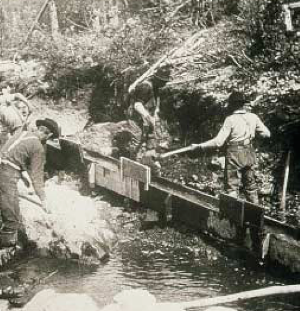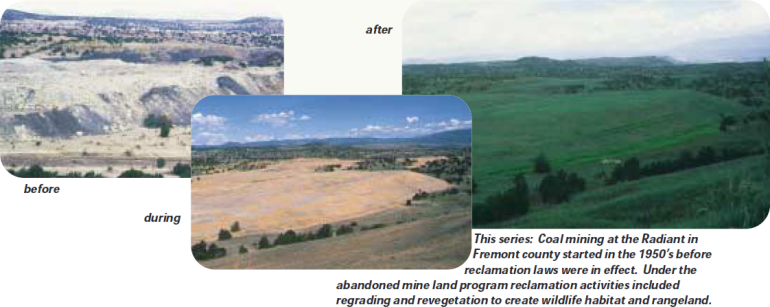Regulatory History
In order to understand the regulations governing mine reclamation, it is useful to view that history as if we were on a time machine. Please join us on that time machine as we look at where we started and where we are today.
Sit down, relax, and let’s go back in time to before 1975. Welcome to the Wild West!
In the pre-1975 world of mine reclamation, there are no laws that protect the environment from the effects of mining. Explorers and miners can disturb the landscape, impact water ways, destroy wildlife habitat and, once the resource is extracted, legally walk away. While some mining companies are making an effort to return mined lands to a usable state, those efforts are inconsistent and often ineffective.
As we move forward to 1975, most western states, including Colorado, are adopting some form of mining and reclamation standards, but they are ad hoc with dubious enforcement capacity.
Moving slightly forward in time, it’s 1976. With a strong commitment from the Colorado Department of Natural Resources, the Colorado Mined Land Reclamation Division is being created to regulate non-coal mining operations. And the Colorado legislature is passing the Colorado Mined Land Reclamation Act, which creates the Mined Land Reclamation Board to serve in an administrative and adjudicatory capacity over non-coal mines.
Now it’s 1977 and the federal government is passing the Surface Mining Control and Reclamation Act to regulate coal mines. Flying ahead to 1979, the Colorado legislature is passing the Colorado Surface Coal Mining Reclamation Act as an equivalent to the federal law. Continuing forward to 1980, and the federal government is approving the Colorado Act, placing administration and adjudication of coal mines under the Colorado Mined Land Reclamation Board.
As we shuttle through time, Colorado and other states are complying with the laws and protecting the environment and our natural resources. After mining is complete, regulations are requiring operators to bring the land back to a beneficial use, often in the form of wildlife habitat.
This brings us to today and, as we look back on this history, we see that Colorado inherited 23,000 sites disturbed before 1975, in need of safeguarding and environmental remediation when all those laws were passed. We see the vast difference between those mining sites and the ones of today. And we are working with a number of partners to tend to the problems at those pre-law, or what we call “legacy,” sites as funding and resources allow.
Thank you for taking this flight with us. If you press the other tabs, you can learn more about mining and reclamation today.

